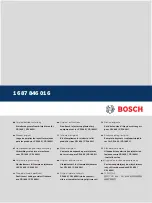
Garmin G1000 Pilot’s Guide for the Piper PA-32 Saratoga
190-02692-00 Rev. A
300
HAZARD AVOIDANCE
SY
STEM
O
VER
VIEW
FLIGHT
INSTRUMENTS
EIS
AUDIO P
ANEL
& CNS
FLIGHT
MANA
GEMENT
HAZARD
AV
OID
ANCE
AFCS
ADDITIONAL FEA
TURES
APPENDICES
INDEX
r
efleCtivity
Reflectivity is the amount of transmitted power returned to the radar receiver. Colors on the NEXRAD
display are directly correlative to the level of detected reflectivity. Reflectivity as it relates to hazardous
weather can be very complex.
The role of radar is essentially to detect moisture in the atmosphere. Simply put, certain types of weather
reflect radar better than others. The intensity of a radar reflection is not necessarily an indication of the
weather hazard level. For instance, wet hail returns a strong radar reflection, while dry hail does not. Both
wet and dry hail can be extremely hazardous.
The different NEXRAD echo intensities are measured in decibels (dB) relative to reflectivity (Z). NEXRAD
measures the radar reflectivity ratio, or the energy reflected
back to
the radar receiver (designated by the
letter Z). The value of Z increases as the returned signal strength increases.
neXraD l
imitations
NEXRAD radar images may have certain limitations:
At a map range of 30 nm or less, individual blocks of NEXRAD weather data are viewable. For the
regional version of the NEXRAD weather product, each block is 1.5 nm wide by 1 nm tall. For the
continental United States version of the NEXRAD weather product, each block is 7.5 nm wide by 5 nm
wide.
The continental US version of the NEXRAD weather product is not available above 60º of latitude.
Preciptiation occuring below the radar beam will not be detected.
The following may cause abnormalities in displayed NEXRAD radar images:
Ground clutter
Strobes and spurious radar data
Sun strobes (when the radar antenna points directly at the sun)
Interference from buildings or mountains, which may cause shadows
Metallic dust (chaff) from military aircraft, which can cause alterations in radar scans
















































